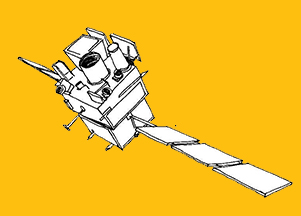The combination of two worldviews
In the past, Europe and China have had two radically different visions of the cosmos. While the former has long thought of the fixed and immutable sky as revealing only silent perfection, the latter has, on the contrary, relentlessly tracked down the slightest celestial changes, sometimes almost imperceptible phenomena, betrayed only by infinitesimal manifestations. Unchanging sky or transient sky therefore remained for a long time two opposing visions. Today the transient sky has become an irreplaceable source of information for astrophysicists and China and Europe are joining forces to unlock the secrets of this constantly changing world where some cataclysms can occur in just a few fractions of a second.
The SVOM (Space-based multi-band Variable Objects Monitor) space mission, to be launched in 2021, will be the second Sino-French scientific mission from space after the launch of CFOSAT (China-France Oceanography SATellite) on 29 October 2018. Its purpose is to detect the brutal sudden end of the very first stars, located at the edge of the Universe, and also to help locate super-powerful cosmic phenomena generated by the fusion of compact stars. This is an undeniable tribute to the long Chinese tradition.
Unchanging sky and transient sky
Europe, and more broadly the Mediterranean basin, has mainly received its astronomical tradition from the ancient Greek world. From an often very limited and superficial observation of the heavens, the ancient Greek thinkers had imagined a cosmic world divided into two distinct domains. On the one hand, the sub-lunar world close to the Earth where all the changing cosmic phenomena (meteors, comets,…) were confined and on the other hand the supra-lunar world where the errant bodies that are the planets orbit in perfect circles. This world itself was entirely contained in a last celestial sphere, the fixed, immutable and eternal sphere that carried the stars. In this highly idealized vision, it was therefore impossible to think of discovering any change whatsoever in this last starred sphere, which, according to common experience, indeed seemed largely untroubled.
After the collapse of classical Greek culture at the beginning of the modern era, this same idealized vision was taken up by the two monotheistic religions, Christianity and Islam, which were to develop in turn. This time, the perfect and immutable character of the heavens was no longer a aesthetic vision from philosophical thinkers, but became a strict religious prescription that sought to describe the perfection of the great Creator. To identify elements that could question this cosmic perfection then became a frontal opposition to the religious powers that also dominated the political world of the time. This religious dogma has thus acted for nearly 1500 years on astronomical science in Europe.
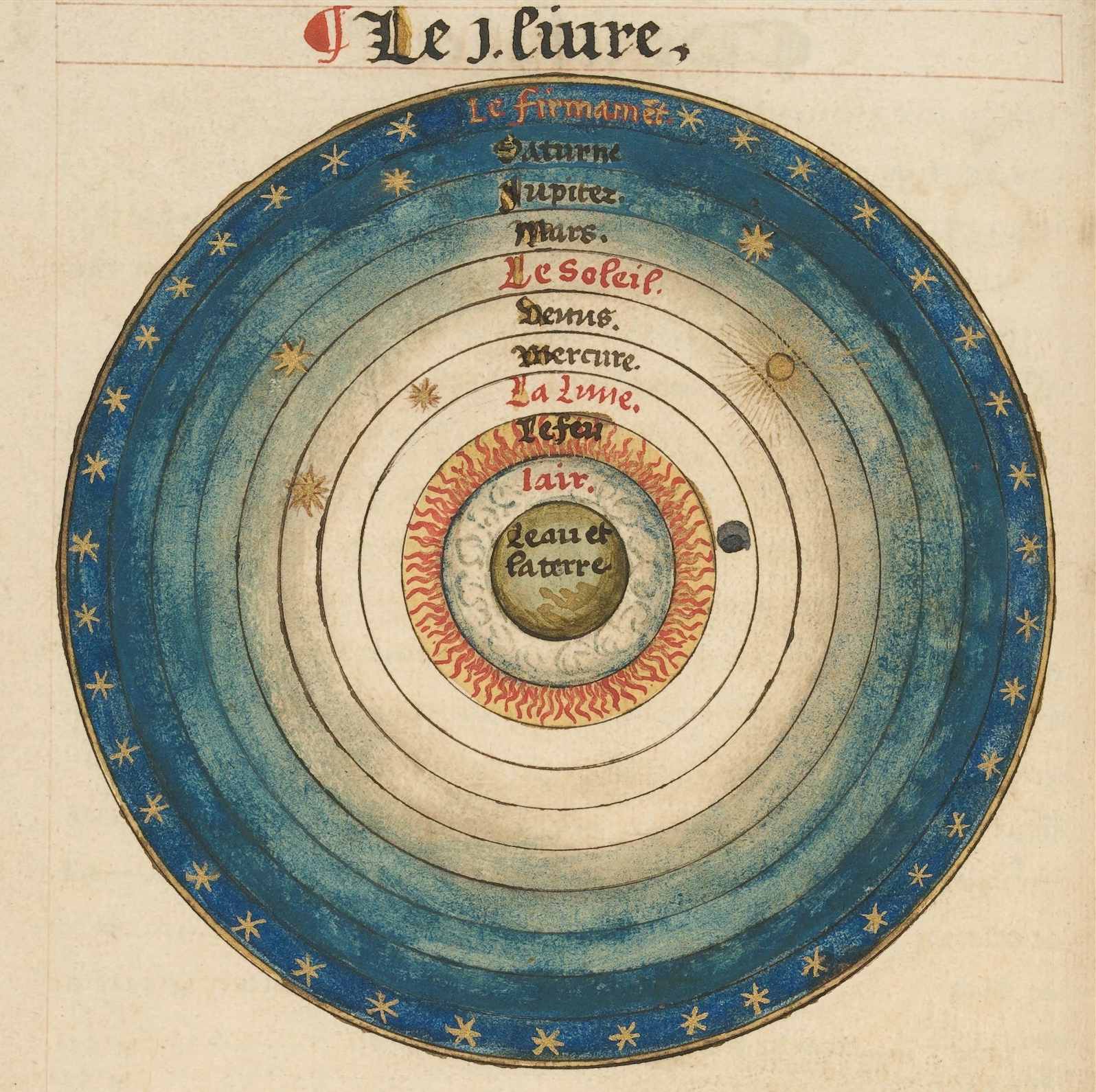
In contrast, other parts of the world have not been subjected to this religious censorship, and in the case of China, on the contrary, it was the political power itself that has favoured since the dawn of time, the deep examination of the changing sky, permanently scanning the heavens in search of transitional phenomena.
In a premonitory way, China is the civilization that has given the most importance to the changes in the skies. At the origin of this quest, the permanent concern to preserve the harmony between Earth and Heaven. The two terrestrial and celestial worlds were seen as two complementary worlds in constant interaction and any disruption of balance in the sky heralded a similar disruption on Earth that needed to be identified. In this vision of Heaven as a mirror of the Earth, the main role was assigned to the sovereign himself, called “Son of Heaven” (Tianzi), because his essential responsibility was to guarantee this Earth-Sky harmony. The Chinese emperor did not receive his mandate and legitimacy from a simple family line or even a conquest, but above all he had to justify a “celestial mandate” (Tianming) granted to him if he could predict and anticipate astronomical phenomena. In this sense, China is the only country in the world to have elevated astronomy to the rank of state science.
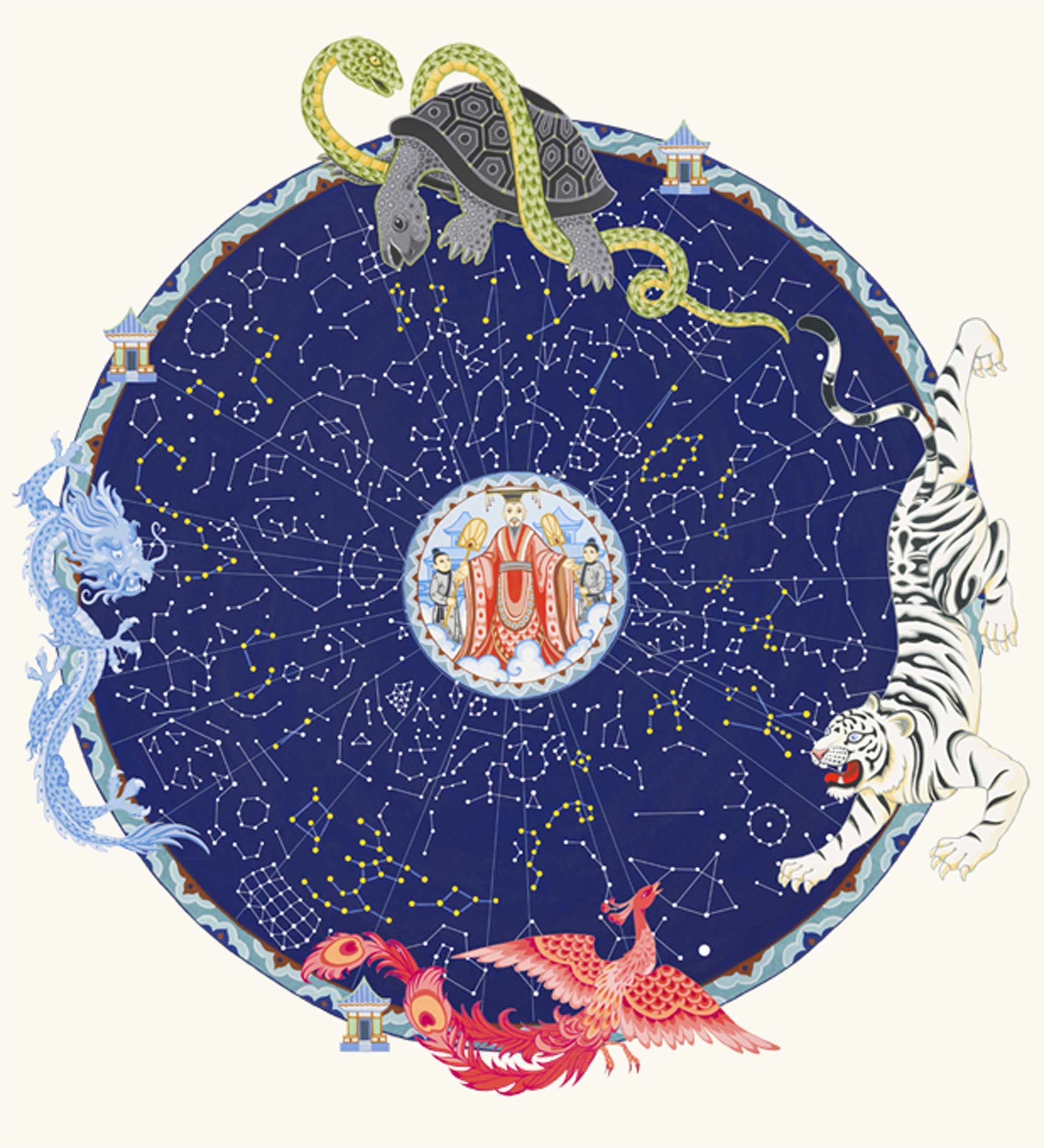
On the orders of the emperor and the central power, everything that could disturb the harmony of the heavens was hunted down, discovered and interpreted. Entire bodies of astronomers and astrologers were mobilized night after night in imperial astronomical observatories gathering hundreds of people (observers, timekeepers and clepsydra, calendar specialists, mathematicians,…) who had nothing to envy our great modern scientific institutes.
From the beginning of the Hans, in the second century BC, the specifications were clearly established and reported to us by the great historian-astronomer of ancient China, Sima Qian, in his encyclopedic work “The Historical Memories”: “If in the whole cycle from beginning to end and from antiquity to modern times the changes that occur at fixed times have been observed deeply and if we have examined their details and the whole, then the science of the Governors of Heaven is complete. “Shiji, Historical Memoirs of Astronomer Historian Sima Qian (109 to 91 BCE).
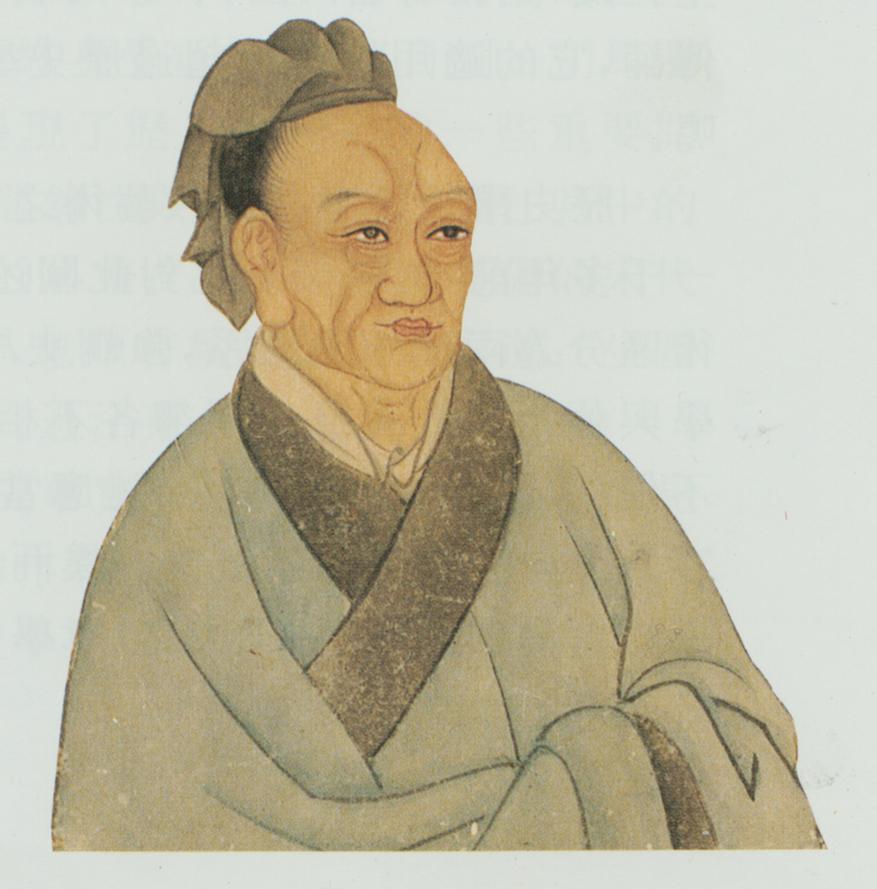
This perfect organization, which has covered more than forty centuries of Chinese civilization, has provided the world with fundamental astronomical discoveries, often still greatly underestimated.
The existence of sunspots on the Sun’s surface was thus clearly established as early as the Hans dynasty (206 BCE to 220 CE) while their discovery in Europe is attributed to Galileo (1613 CE). Even more spectacularly, the first mention of a star explosion, resulting in the temporary appearance of a new star (novae or supernovae), seems to have been documented in China as early as the 15th century BC and precise catalogues and reports of these spectacular events are available since the Han period. In Europe, the first description of such phenomena was given only by the Danish astronomer Tycho Brahe in 1573.
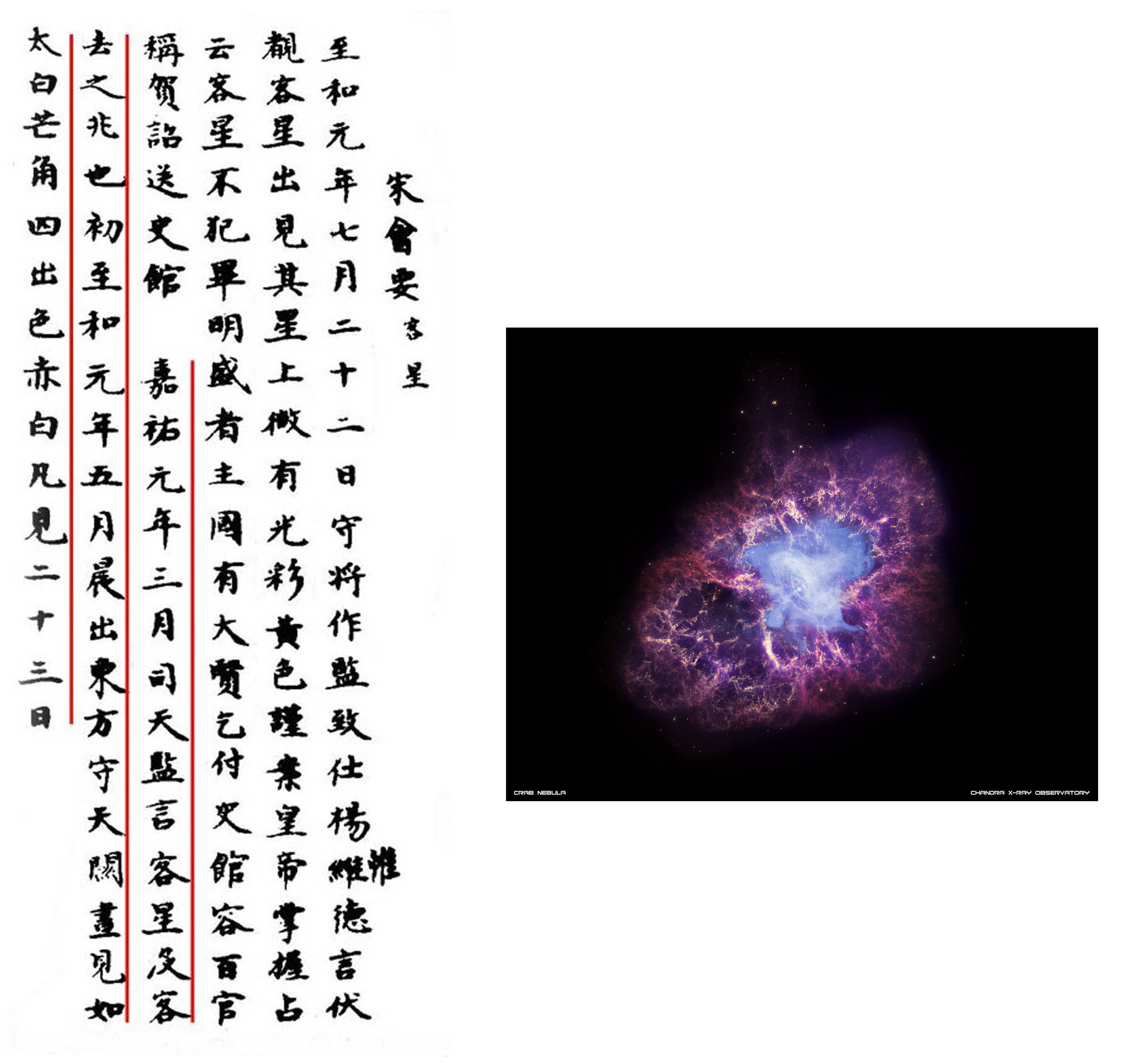
It reads (from top to bottom and from right to left, highlighted in red): “In the first year of the Jiayou reign, in the third lunar month[from 19 March to 17 April 1056], the head of the Astronomy Bureau said: “The invited star has disappeared, which is a sign of the host’s departure.” Earlier, during the 5th month of the first year of the Zhihe reign[July 1054], this star had appeared in the East, guarding Tianguan[??- the star ? Tauri]. She was visible during the day as Venus. It pointed its rays in all directions and its color was pale red. It remained visible[during the day] for 23 days. ». Crab supernova remanent, X-ray image composition, visible and infrared light. Credit: X-ray: NASA/CXC/SAO/F.Seward; Optical: NASA/ESA/ASU/ASU/J.Hester & A.Loll; Infrared: NASA/JPL-Caltech/Univ. Minn./R.Gehrz.
Thus the appearance of a supernovae, a new transitional star, reveals an event that is crucial to the history of the universe: the explosion of a massive star that will spread in space all the complex cosmic elements (carbon, nitrogen, oxygen, etc.) produced in the star’s heart that can contribute later to the emergence of life on a planet.
In other areas of light such as gamma rays, the appearance of very short bursts of gamma radiation also marks the end of life of very large stars, which can be detected thanks to this signal up to the far limits of the Universe.
Finally, beyond light itself, the very structure of space-time can be transiently altered by the monstrous fusion of black holes or compact stars and reach us as gravitational waves, new messengers now detectable on Earth by laser-based sensors. In short, we are learning much more today from the transient sky than from the permanent sky
All these transient phenomena are the main objectives of the Franco-Chinese SVOM mission. Their detection, location and precise description will be recorded to better interpret the sky, just as the astronomers of the Han dynasty did more than 2000 years ago. Thus the same concern to better read the changes in Heaven, a quest shared today by China and France thanks to SVOM, is renewed centuries later.
References
Jean-Marc Bonnet-Bidaud, « 4000 ans d’astronomie chinoise », Ed. Belin, 2017.
Joseph Needham and Wang Ling. « Science and Civilisation in China, vol. 3, Mathematics and the Sciences of the Heavens and the Earth », Cambridge University Press, 1959.
Xiaochun Sun and Jacob Kistemaker, « The Chinese Sky during the Han – Constellating Stars & Society », Ed. Brill, 1997.
Zezong Xi, Shuren Bo, « Ancient Oriental Records of Novae and Supernovæ », Science, vol. 154, p. 597, 1965.

